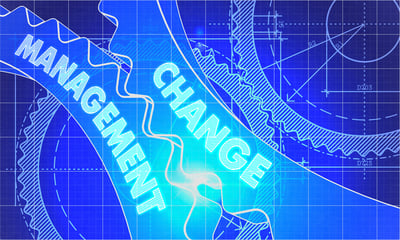 If you are tasked with finding a change management solution for your company, you might be feeling a bit overwhelmed. All sorts of software from spreadsheets to industrial-strength enterprise software can be marketed as “change management” technology. Few people are experts at evaluating change management software, so if you are a little lost, you are not alone.
If you are tasked with finding a change management solution for your company, you might be feeling a bit overwhelmed. All sorts of software from spreadsheets to industrial-strength enterprise software can be marketed as “change management” technology. Few people are experts at evaluating change management software, so if you are a little lost, you are not alone.
To help, we’ve outlined the most critical capabilities and features that you should look for in each solution that you consider. To make it even easier, we’ve created a comparison spreadsheet you can use to point to the most important functionality for your organization and compare solutions.
We’ve broken it down into two sections. The first deals with the technology itself, the second covers your relationship with the vendor and the technical infrastructure they provide. If you keep these things in mind, you’ll end up with a platform that will help take your organization’s improvement efforts to the next level.
Software Features and Capabilities
Managing change within an organization is no easy task. It requires a supporting platform that is designed for that particular purpose. Every solution you evaluate will be different, but the following capabilities should be present in some form or another.
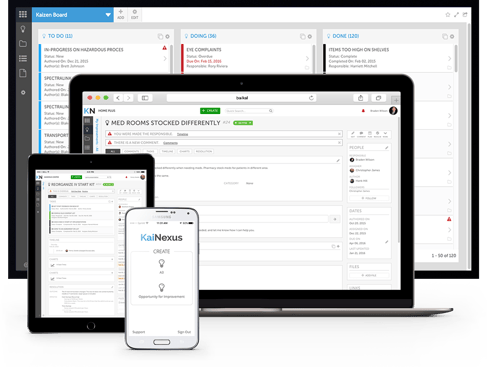 Capture Opportunities for Improvement – Because everyone in the organization should be responsible for contributing to positive change, it’s essential to find a solution that makes it easy to submit ideas for improvement either in the online application, by sending an email, or by accessing a mobile app. Team members should be able to include documents and images that help explain the suggested change. The solution must be user-friendly and require minimal training. Ideally, customizable role-based views and input templates will be available
Capture Opportunities for Improvement – Because everyone in the organization should be responsible for contributing to positive change, it’s essential to find a solution that makes it easy to submit ideas for improvement either in the online application, by sending an email, or by accessing a mobile app. Team members should be able to include documents and images that help explain the suggested change. The solution must be user-friendly and require minimal training. Ideally, customizable role-based views and input templates will be available
Implementation Workflow – Once the opportunity for improvement is submitted, the solution should support the process of implementation and help ensure that nothing falls through the cracks. You’ll want to insist on streamlined project administration with task management and dependency workflows. Managers and supervisors should be able to assign ownership, schedule projects, and set the priority levels. Alerts and notifications on the desktop, email, and within the application are essential.
Visual Management - Visual management a great way to communicate the status of projects, understand the impact of improvement work and align goals and objectives. To be as flexible as possible, you’ll need the options of an X-matrix, calendar, or Kanban view. The solution should allow users to set up team dashboards with charts, graphs, and performance measurements. The current task load and activity level for all users should be easy to see.
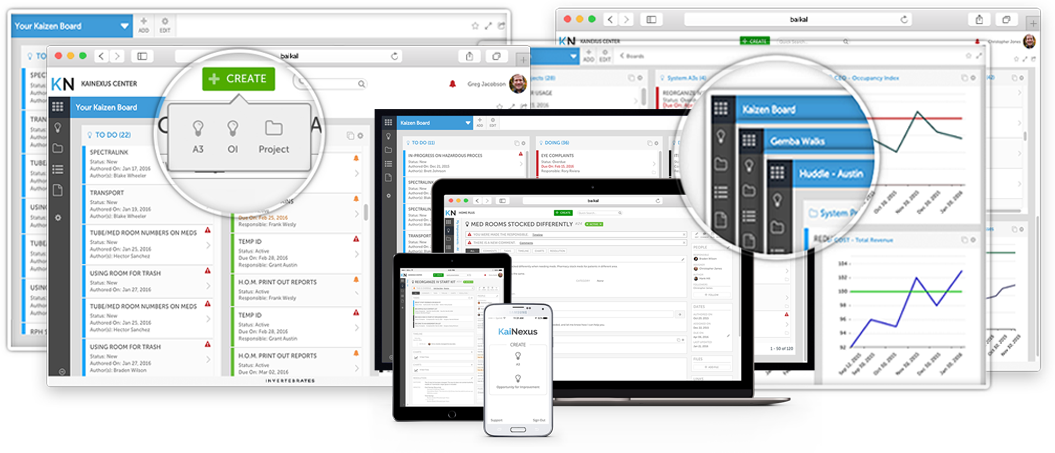
We recommend looking for a solution that includes the following visualization tools:
- Huddle Boards
- Kanban Boards
- Custom Boards
- Board Nesting
- Control Charts
- Run Charts
- Bar Charts
- Pareto Charts
- Goal Charts
- Bowling Charts
Of course, you should also be able to export your data to Excel if desired.
Robust Reporting – When people evaluate software, they usually focus on the data entry aspects of the solution. That’s important to consider, but getting data out is as vital as putting data in. That means that robust and easy to use reporting should be high on your checklist list. It should be a snap to get impact reports and set ROI targets and forecasts. Reports should be available at the organization, team, and individual levels
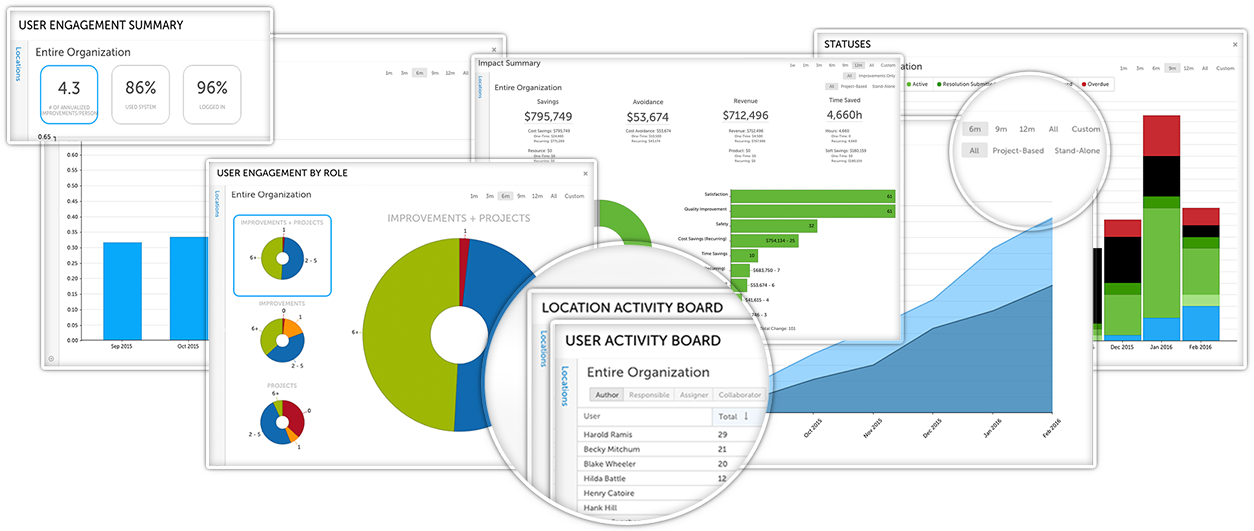
Cross-functional collaboration – Change management requires cooperation beyond individual silos. The best solutions make it easy to work together to solve problems across multiple functions or teams. There should be a centralized location for storing files and updates. Users should easily find past projects with Boolean search, advanced filtering, and custom lists. The ability to broadcast successful improvement projects is one feature that people often overlook, but it is useful to help maximize employee engagement.
Customer Support and Technical Requirements
Finding a solution with all of the functionality needed is only the first step. It is also necessary to ensure that your vendor meets the security and compliance obligations of your organization and that they will be a good long-term partner for your organization. Keep in mind:
Customer Support – The best way to access a software provider’s approach to customer support is to ask a bunch of questions. Here are a few:
- Will your organization have a dedicated account manager to help with set-up and ongoing support?
- How will your team be trained on the product, and how much will it cost?
- What is the average response time for technical support request?
- Is there a self-service help portal available?
- How often are product updates issued?
Technical Considerations - You don’t have to be an IT guru to get the best change management software, but there are some technical details to understand. Application security is essential, especially for companies that are required to be HIPAA compliant. You’ll need to know how the vendor keeps data secure. Only consider solutions with HTTPS/SSL data transfer, encryption at rest, and advanced password configuration. Also, ask about single sign-on if that is the standard at your organization.
Hopefully, you now feel armed with some thoughts about what to look for as you compare the available solutions and providers. Let us know if you have any questions.
Download the Product Comparison Worksheet (Excel)
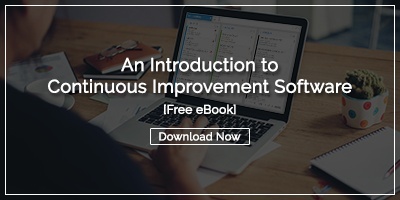


Add a Comment